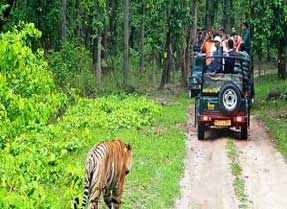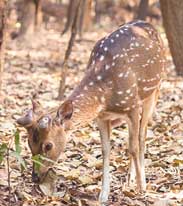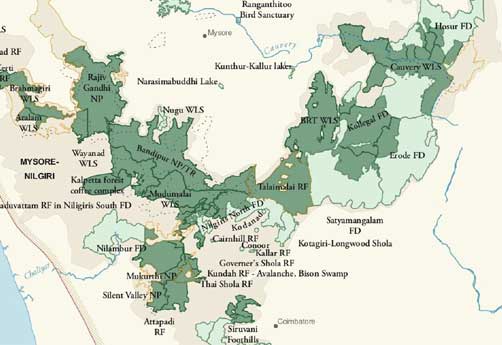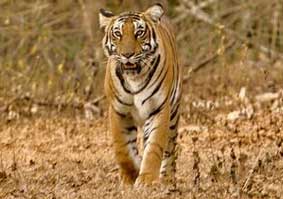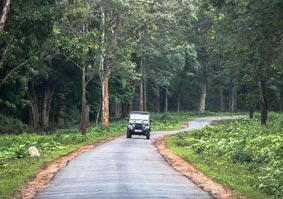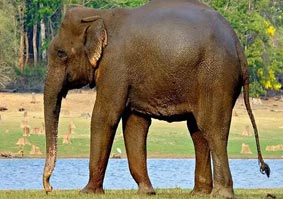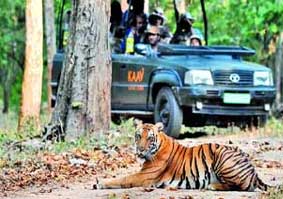History of Nagarahole National Park
Before it attained the present-day status of a tiger reserve under the Wildlife Protection Act of 1972, the Nagarahole National Park had a dated back journey since 1955. Formerly, near about 285 square kilometer area of forest under the then Coorg state was declared as the ‘Wildlife Sanctuary’ in the year of 1955. Later in the year 1983, by enlarging over an area of around 571.55 square kilometer, the state government promoted the Wildlife Sanctuary into the National Park. And, later in the year of 1986, Nagarahole Park along with Bandipur Tiger Reserve was included as a part of the ‘Nilgiri Biosphere Reserve’.
It is important to note that in the year 2000, the Nagarahole National Park was associated under ‘Project Elephant’ in esteem of its healthy number of elephant population and it was also constituted as a part of the ‘Mysore Elephant Reserve’. And consequently in the year 2003, Nagarahole Park got the status of the Tiger Reserve by including Nagarahole under the ‘Project Tiger’ and made it an extension of Bandipur. Nagarahole was declared as an independent Tiger Reserve later in the year 2007 by notifying around 643.392 sq. km. as the Core/Critical Tiger Habitat. Ultimately, in the year 2012, the Government of Karnataka notified an area of 204.589 square kilometer as the buffer zone of Nagarahole extending the total area of the reserve administration to 848 sq. km.
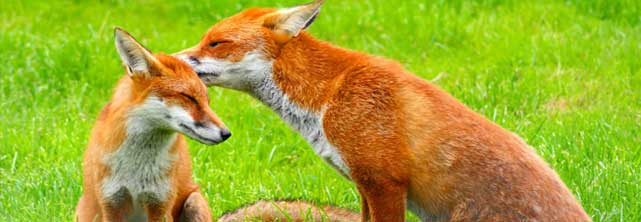
More about Nagarahole
Declared as the 37th Tiger Reserve of India in 1999, Nagarahole National Park is a part of the Nilgiri Biosphere Reserve backed by the Brahmagiri Mountains of the Western Ghats filled with teak and sandalwood trees at latitudes 12°15'37.69" N and longitudes 76°17'34.4" E covering an area of 847.981 sq. km. It is an important tiger reserve and a major hub of conservation under Project Tiger and Project Elephant. Adjacent to Bandipur, Mudumalai, and Wayanad Wildlife Sanctuary together forms the largest protected area in Southern India.
With 125 individual tigers, the Nagarahole Tiger Reserve boasts to have the highest density amongst its counterparts. The Protected Area supports the large masses of herbivores and carnivores like Leopards, Tigers, Dholes or Asiatic Wild Dogs, Gaurs, Elephants, Sambar, Chital, Wild Boar, Barking Deer, Four-Horned Antelope, South-Western Langur, many more such species are found here.
The Kabini River is the largest river in the national park bisecting the park into two parts cascading through the jungle landscapes and was dammed in the year 1974 for an irrigation project. Hence, Kabini and Taraka Rivers are large water bodies situated towards the west and southeastern parts of the park respectively. Along with the rivers, the park has a good number of streams and rivulets.
Nagarahole is acknowledged as the park with one of the high-density tiger populations in the country after Corbett and Kaziranga. It comprises some astonishing landscapes and phenomenal streams that twist around like a snake leaving wildlife enthusiasts and tourists astounded by its natural beauty.
Nagarahole also attracts bird enthusiasts, with its spectacular variety of birds that come to this area regularly.


